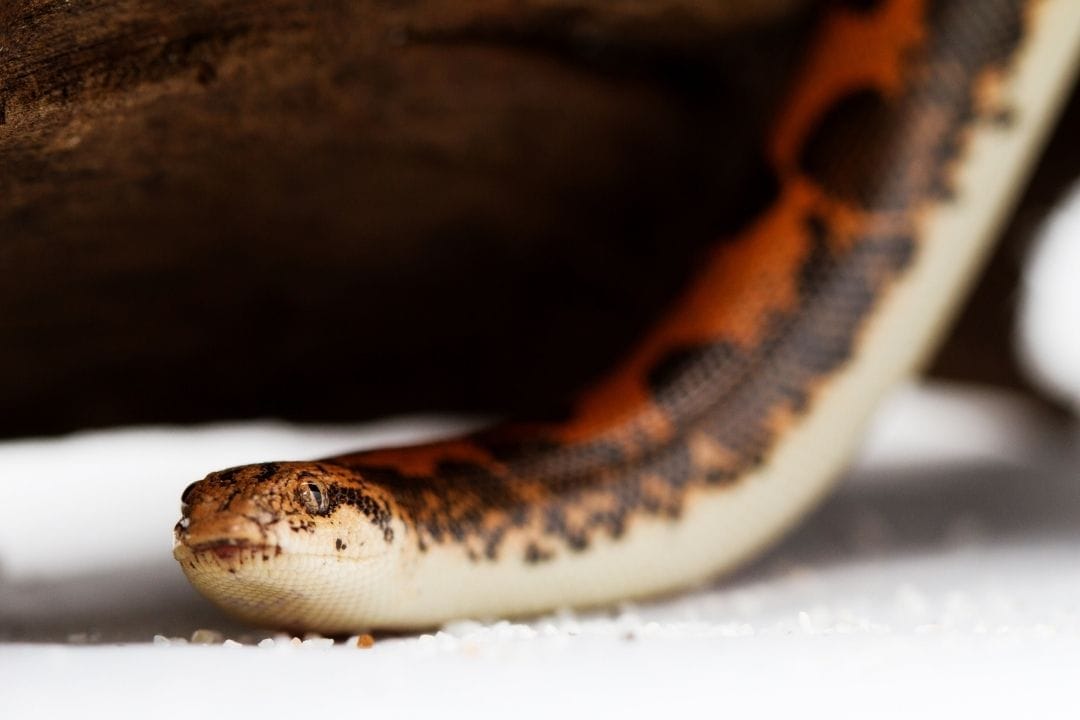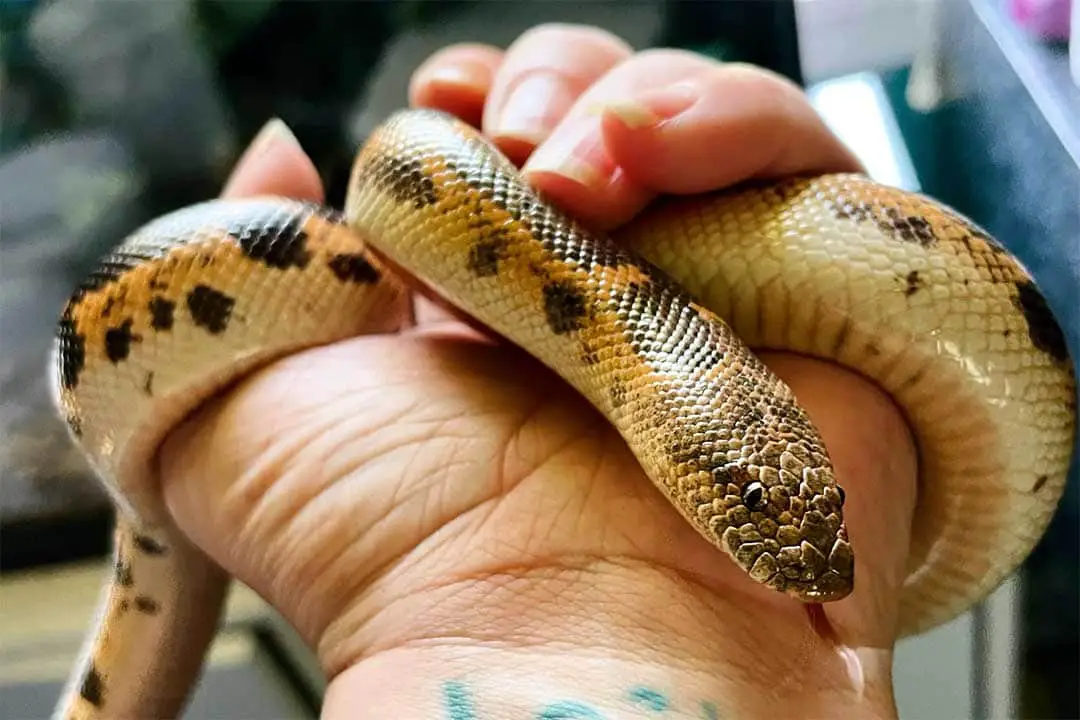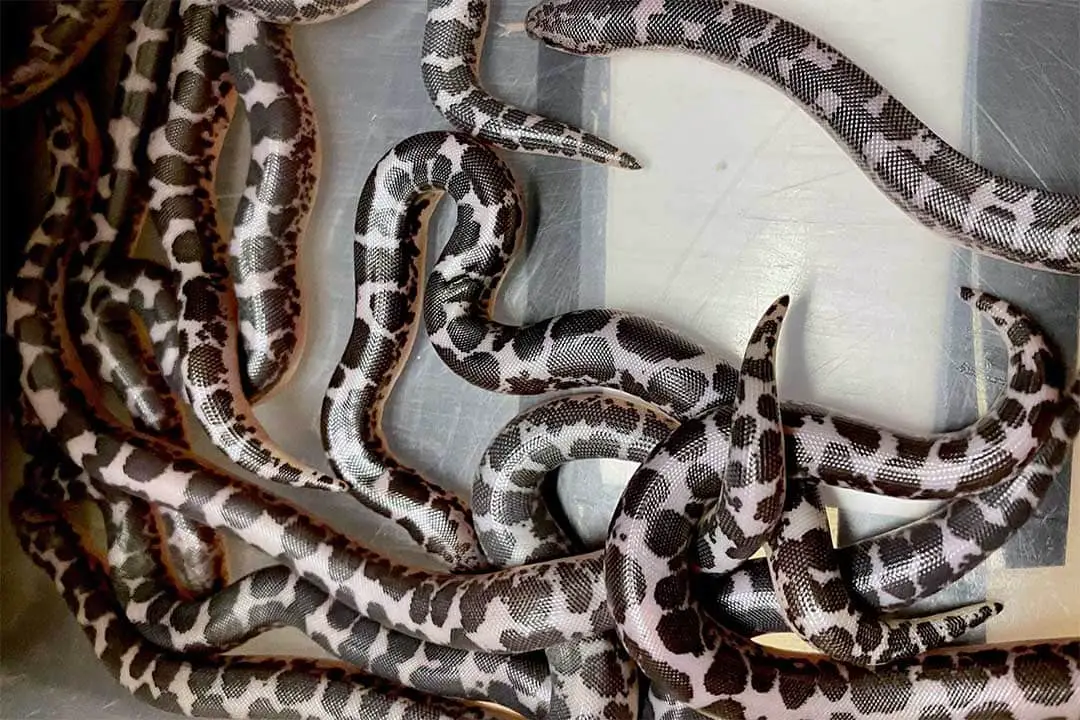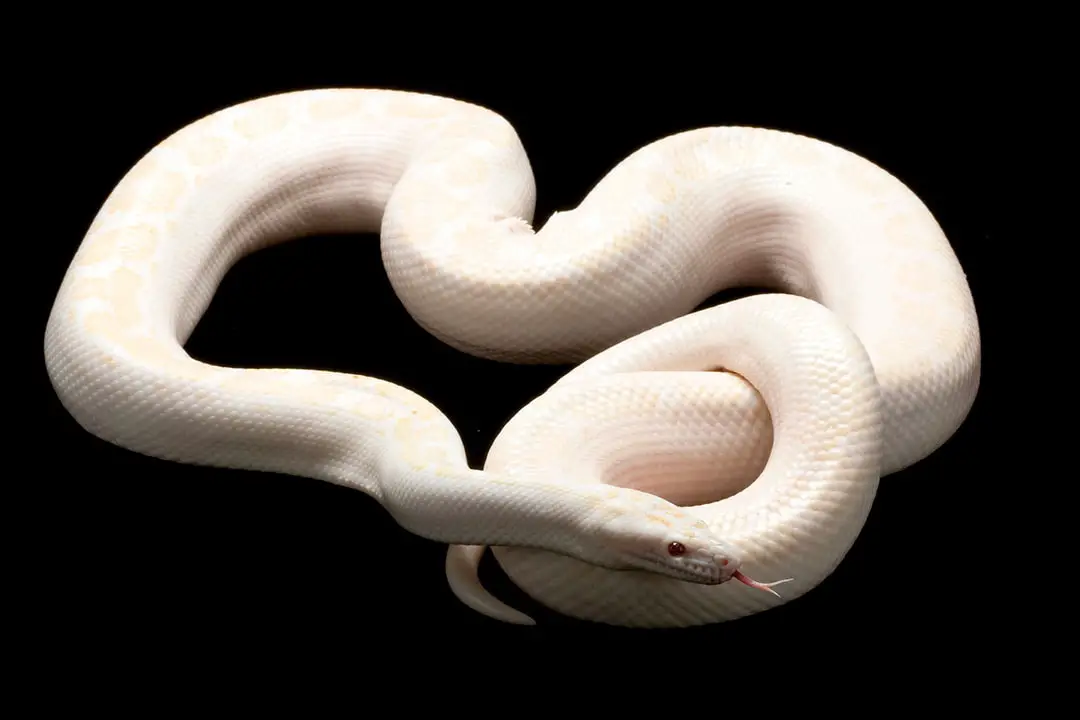A Snake that refuses to eat for extended periods of time can be worrying and a cause for concern.
Do you know why your Kenyan Sand Boa is not eating?
Your Kenyan sand boa may choose not to eat or it could be due to medical reasons. You may be the reason why your snake is not eating. Additionally, the sand boa won’t eat when it’s not comfortable. Also, the food you give it may not be as enticing.
While most snakes can endure long periods without eating with no suffering, a sudden stop to your Kenyan sand boa feeding habits will most likely be a cause for concern.
The Kenyan sand boa is most likely to pounce on anything that is dropped in its cage as food. This article discusses the reasons that may lead to your Kenyan sand boa going off feed.
Here are some of the reasons why your Kenyan sand boa is not eating:
1: Stress
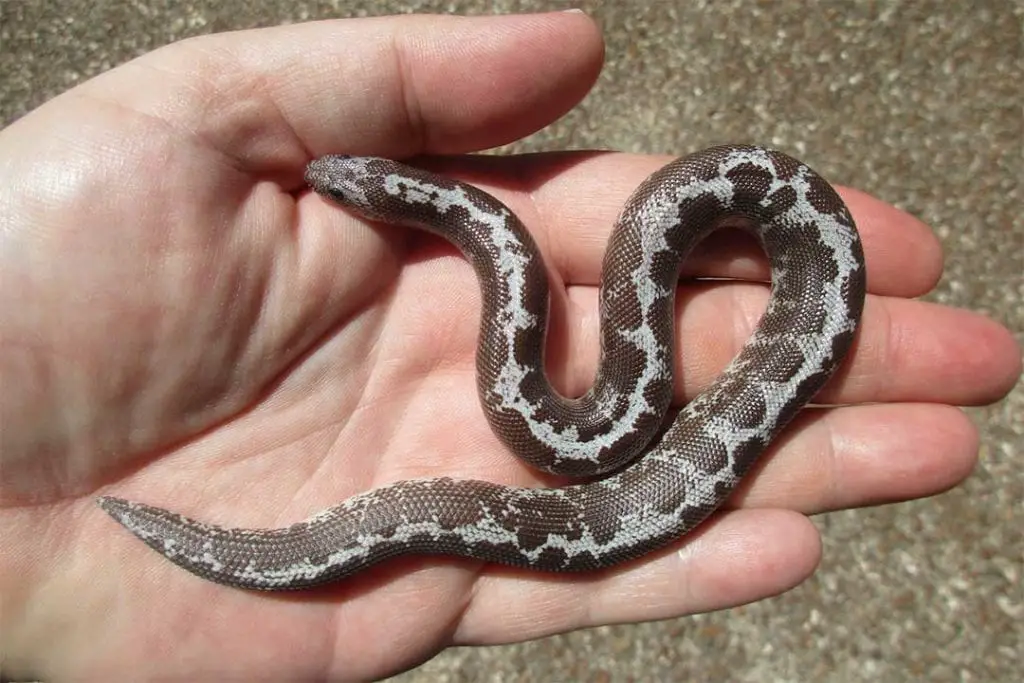
Declining to eat may indicate that your snake is under stress. Your Kenyan sand boa may refuse to eat if it seems to be under stress. Your Kenyan sand boa may be stressed if you have recently acquired it.
Snakes tend to be routine creatures and do not like change. Bringing a snake into a new home may make it stressed as it tries to adapt.
Moving may not be the only cause of stress to your Kenyan sand boa. For example, introducing a new pet to the home or a change in temperature or lighting of the snake’s crib may make it stressed.
In addition, some novice snake owners may tend to over-handle their reptile pet, which is frequently a common mistake. Over-handling a snake may make it stressed, and consequently refuse to feed.
2: Wrong temperature and/or humidity
Snakes are cold-blooded creatures and hugely dependent on their surroundings to keep healthy. The Kenyan sand boa requires a relatively warm atmosphere to keep their appetite and properly digest food. For the Kenyan sand boa to really have an appetite, it requires temperatures higher than 85F.
Keeping your snake in lower temperatures may lead to slower digestion. This may result in your sand boa developing lethargy and digestive problems. Day temperature should range from 85F to 90F, while night temperature should not go below 78F.
On the other hand, keeping your Kenyan sand boa in too hot conditions with no heat regulations may be psychologically stressful, leading to its refusal to eat.
Improper humidity levels can cause skin and respiratory problems, resulting in a loss of appetite for your Kenyan sand boa. Check your substrate selection to ensure it is appropriate for your sand boa.
Everything you need to know about caring for Kenyan Sand Boas in captivity:
Read our Kenyan Sand Boa Care Sheet (Complete Guide)
3: Pre-shedding conditioning
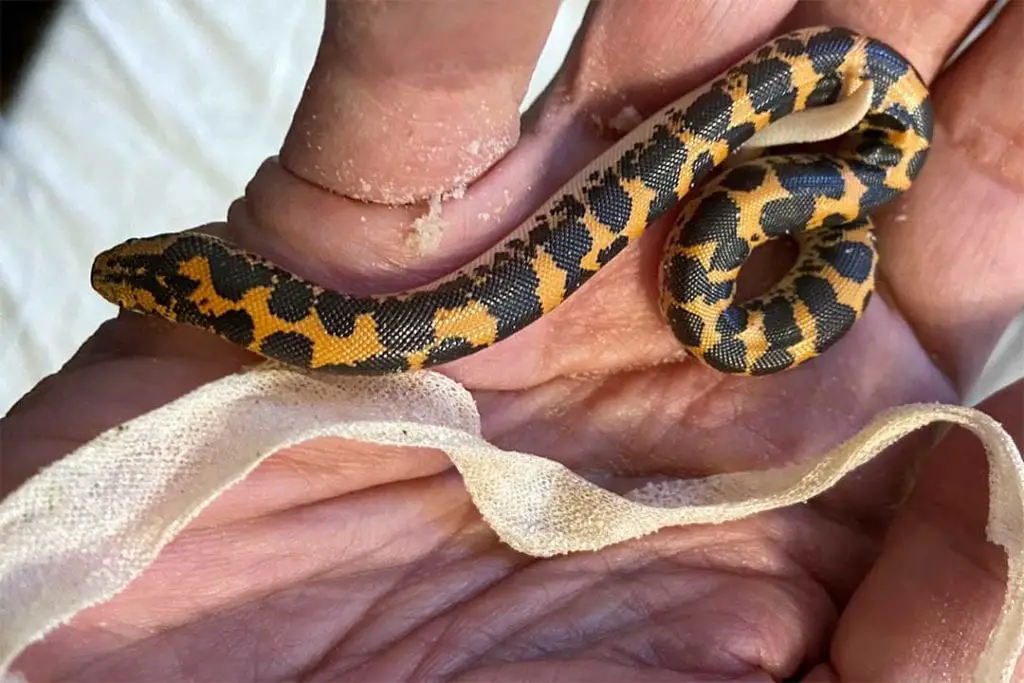
Sometimes, it might be as simple as getting ready to lose their skin that may cause your Kenyan sand boa to refuse to eat.
It is highly possible for your snake to avoid meals for days or even weeks during this state.
4: The feeding surroundings
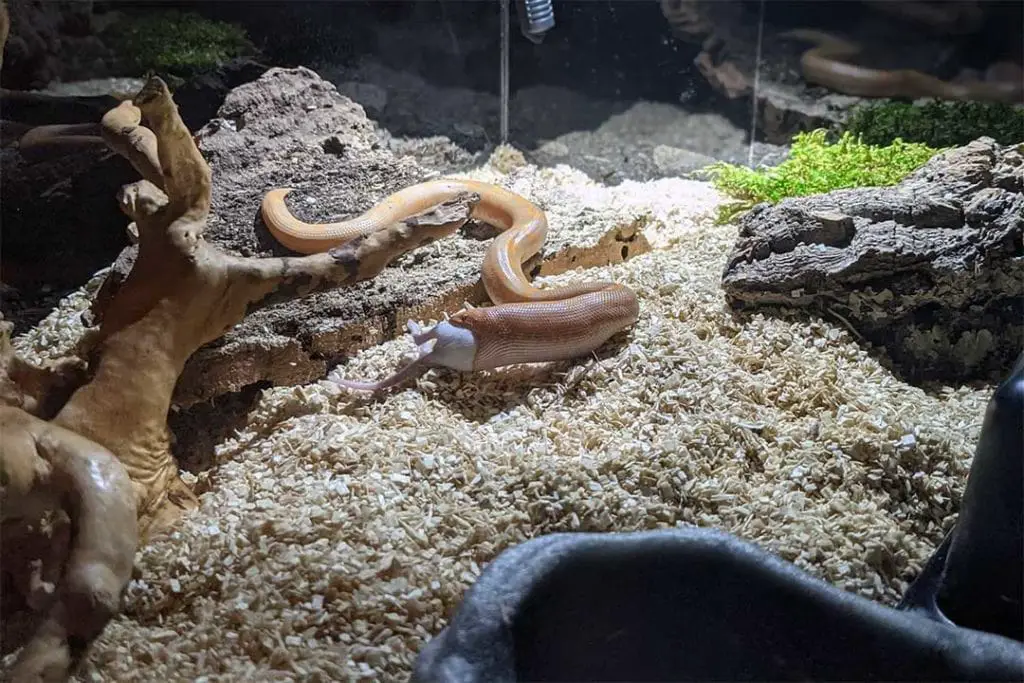
Snakes like hiding and feeling as if they are concealed from view. Your Kenyan sand boa may be refusing to eat because it is in an open place and no place to make them feel private.
These snakes also do love to feed after dawn. They like to feed in the dark.
Having your sand boa in a well-lit open place with a lot of interaction will have them stressed out. This results in their refusal to eat.
What To Do When Your Kenyan Sand Boa Is Not Eating

As much as your Kenyan sand boa declining food may be normal, sometimes reasons might be caused by the pet owner, which can be rectified. However, it might be due to health reasons in the worst-case scenario, which require a vet’s intervention.
There are few things you can do to encourage your Kenyan sand boa to feed.
Your Kenyan sand boa might be declining to feed due to the temperature of its surroundings.
Make sure to put its enclosure in an optimal ambient condition. Sand boas like to be in hotter areas, preferably ranging from 85F to 90F. Use a thermostat to regulate the heating elements in your sand boa’s enclosure.
You can use a fluorescent light that is left on for eight to twelve hours a day. During the night, use an infrared heat light to observe your sand boa. Night temperature should not drop below 78F.
Kenyan sand boas like to burrow, and this necessitates that the substrate in their enclosure should enable them to. Typically, Aspen chip or Beta chip is the most suitable for the sand boa. Make sure their cage is also relatively small.
The Kenyan sand boa tends to be ambush feeders. Therefore, it is best to offer them live food and in the dark, which they will capture by abruptly creeping up below the victim.
If you are not offering live prey, play with its prey. Try moving it up and down the enclosure to imitate live prey. To trigger a feeding response, you can suspend the feed above the sand boa’s head and close to its sensitive parts, such as the nostrils.
If you have been giving your sand boa rats only as its feed, try changing to live fuzzy or hopper mice. A change in diet might help get your snake back to its usual feeding habits.
More hiding and secluded spots should be provided for your Kenyan sand boa to eat privately. These snakes like to feed after dawn and in the dark.
Try scenting your sand boa’s feed. You can use chicken broth to put some smell on their feeding container. This can occasionally elicit a more positive response.
If you are offering live feed, you can draw some blood, as it will also help evoke a feeding response from your Kenyan sand boa.
However, if your Kenyan sand boa is still not eating after a long time, consult with your vet as it may be due to a medical condition.
Conclusion
Kenyan sand boas make excellent reptile pets, although they tend to be more prone to stress than other boas. Most snakes can go without food for long periods.
They are not the usual regular feeders as other common household pets and might leave you wondering if it is normal. It can be perfectly normal for your sand boa to refuse to eat. However, you should consult your vet if it goes on for a long time.
Females tend to feed more than male sand boas and are typically larger. The females feed once or two times a week, while the male sand boas can go up to two weeks with no food.
The Kenyan sand boa might decide to decline food on purpose. Most males will probably go off feed if they smell a fertile female.
